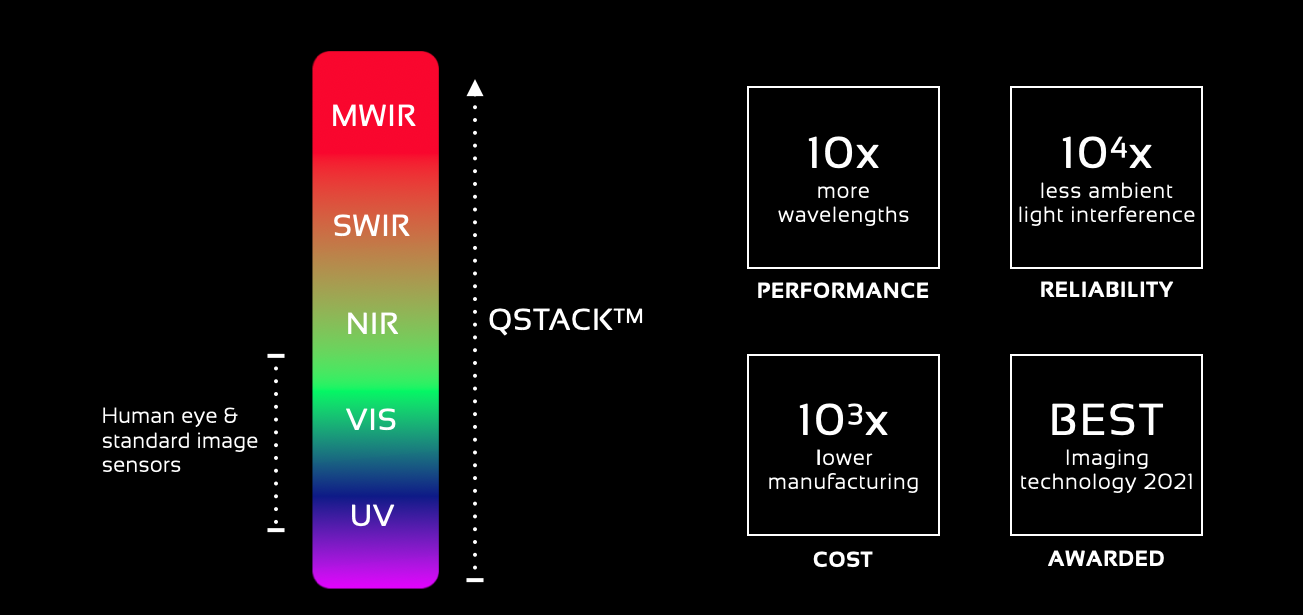qSTACK
why.
Silicon complementary metal-oxide-semiconductor (CMOS) image sensors have become ubiquitous in the span of only a few decades. More than seven billion image sensors are shipped per year, reflecting a €21 billion growing market (2021). Most of these units are based on technology optimized to provide high-quality images for human consumption. Obtaining these images means capturing visible light with a resolution, efficiency, and low noise level that provides high fidelity images on digital screens or in printed format. In recent years, Si-CMOS image sensors have become more frequently used for a different purpose: as the eyes of machines. Self-driving cars, service robots, extended reality (XR) devices, and drones all rely on Si-CMOS image sensors for interpreting and navigating the world around them.However, these sensors are sensitive only to a portion of the light spectrum. That makes it very difficult to avoid sunlight interference and leads to low performance under challenging visibility conditions such as fog and at night. Furthermore, Si-CMOS image sensors capture a limited amount of information (more wavelengths contain more information). Machines could thus be made more reliable, safe, and intelligent by increasing their vision capabilities enabling them to see better and more through image sensors that capture beyond visible light: near-infrared (NIR), short-wave infrared (SWIR), and into the mid-wave infrared (MWIR). Qurv coined this new category of image sensors, wide-spectrum image sensors.
how.
Most computer vision (CV) applications would benefit dramatically from the electromagnetic spectrum's NIR (0.7–1.0 μm), SWIR (1.0–2.5 μm) range and beyond. First of all, sunlight interference can be reduced up to four orders of magnitude (104x) as compared to Si-CMOS image sensors, enabling more robust active light-based sensing systems, such as LiDAR and eye-tracking, in outdoor conditions. More relaxed eye safety conditions in the SWIR band allow LiDAR systems orders of magnitude additional power, enabling a significant range increase. Furthermore, up to 40× times more photons are available in the SWIR band during moonless nights, allowing true night vision. Fog and haze are more transparent in the SWIR; therefore, a SWIR imaging system enables enhanced safety under all weather conditions. Furthermore, SWIR, and beyond, imaging enables the detection of substances using optical detection of molecular fingerprints.









